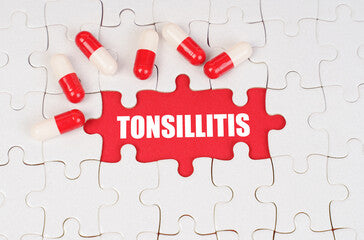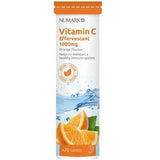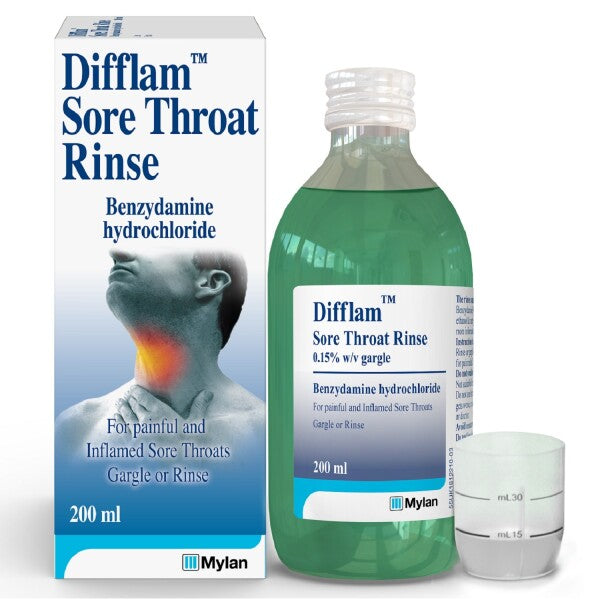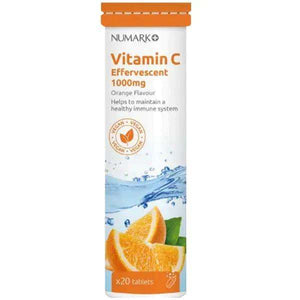
Related products
Tonsillitis, a common health condition primarily affecting children and adolescents, is the inflammation or infection of the tonsils—two lymph nodes located on each side of the back throat. Classified under some of our society's most frequently occurring infections, with premature age groups being more susceptible to it than their mature counterparts.
The primary cause of this disorder is various viruses or bacteria, such as Streptococcus pyogenes (group A streptococcus), which causes strep throat. Both bacterial and viral causes lead to comparable symptoms associated with tonsillitis; however, distinguishing them becomes essential since treatment methods differ significantly between both cases.
Signs indicating an individual might have contracted tonsillitis include sore throat, often severe enough to make swallowing difficult, and reddened swollen tonsils occasionally accompanied by white patches or pus streaks. Additionally, fever and headache coupled with loss of appetite alongside tender neck glands characterize other prevalent symptoms associated closely.
Diagnosing tonsillitis typically begins through physical examination, where clinicians check signs suggesting inflamed tonsils plus any visible whitish spots, which are tell-tale indications regarding the presence thereof in patients' bodies. To further affirm these findings, laboratory tests like a throat culture swab would be incorporated into diagnostic protocols if doctors suspect bacterial involvement rather than just virus-based interactions contributing to disease progressions.
Dr Mark Howell, a prominent ENT specialist, opines that understanding whether one's body suffers from a particular strain is important, particularly when strategizing appropriate medical interventions tailored to effectively address individual patient conditions.
Managing instances related to mild recurrent bouts simply involves supportive care, including hydration maintenance along with proper rest complemented via over-the-counter pain-relievers mitigating discomfort levels experienced during symptom flare-ups, ensuring faster recoveries within usually seven days post-diagnosis period starting points according to the latest clinical guidelines issued publicly about standardized procedures encompassing current global healthcare landscapes around us today overall across wide spectrum demographics globally present happening all-around.
A report published in NIH Tonsillitis caused by Group A β-hemolytic streptococcus (GABHS) most commonly occurs in children 5–15 years old, affecting less than 15 % of children younger than three years old, 24 % of children less than five years old, and 37 % of school-aged children. This is a stark reminder of this health condition's rampant prevalence amongst our younger age groups, necessitating better awareness coupled with effective preventive measures established to significantly promote overall well-being throughout society.
But when does this common illness become a medical emergency warranting immediate attention? That is an important question that will be addressed in the following sections.
What is Tonsillitis?

Tonsillitis refers to an infection or inflammation of the tonsils, oval-shaped pads of tissue situated at the back of one's throat - each on either side. These immune system components are crucial in trapping harmful bacteria and viruses that enter the mouth.
Two major types include acute tonsillitis, characterized by temporary bouts with full recovery between episodes, and chronic tonsillitis, identified by persistent, recurring episodes that carry longer durations spanning extended periods. They most frequently target younger children aged between three to seven years due to their still underdeveloped natural defence mechanisms compared to adults possessing stronger immunity features inherently developed over time combating similar infectious agents more robustly according to their superior health advantage liabilities overall, generally speaking here given context provided.
What are the causes of tonsillitis?
Tonsillitis is primarily an outcome of viral or bacterial infections. Notable among the viruses that cause this infection are adenoviruses, influenza virus, Epstein-Barr virus, parainfluenza viruses and enteroviruses. Streptococcus pyogenes can cause bacterial tonsillitis.
Notable records reveal a recurrence of Strep throat (caused by group A beta-hemolytic streptococcus) in Tonsillitis cases globally over many years. The Centers for Disease Control Prevention affirms this, with data showing 15-30% of childhood-related diagnoses being attributed to Group A Strep.
Symptoms of Tonsillitis
Individuals with tonsillitis might experience the following symptoms:
Sore Throat

This is often the initial sign of tonsillitis, a condition characterized by severe pain and discomfort when swallowing food or liquids. The sensation arises from inflammation in the throat area caused by an infection. Check our article on Best Sore Throat Remedies to Make You Feel Better Quickly for detailed home care treatment of sore throat.
Reddened Tonsils

Inflammation resulting from viral or bacterial infections causes tonsils—immune system components found within the oral cavity—to become enlarged and reddened. These symptoms are classic hallmarks indicative of the likely occurrence of a disease process.
White Patches on the Tonsils

The presence of these patches signals pus accumulation as a marker of active ongoing bacterial activity inside tonsil tissues. Secondary fallout infection progress might appear as yellowish whitish spots over the surface part, thereby further diagnostic value confirming the suspected condition if identified during physical examination.
High fever accompanied by Chills

The body's natural defence mechanism responding to the presence of foreign pathogens involves raising the body temperature strategy, crippling microbial replication; hence fever is a common presentation alongside chills fluctuations between feeling hot and cold characteristic of most types of systemic infectious conditions, including the present one.
Headache

Another frequently experienced complaint associated with general discomfort attributed to inflammatory products released infected areas impacting sensory nerves and causing head pain scenario, making the overall situation more distressing for patients dealing with ailment tandem with other symptoms mentioned above.
Loss of Appetite
Decreased desire to eat is not an uncommon phenomenon amid scenarios where painful swallowing coupled with reduced energy levels and fatigue make food ingestion difficult. This adds burden to illness indirectly per se, translating into weight loss and longer-lasting untreated bouts. These need to be promptly addressed, and adequate nutritional support care must be provided to prevent unwanted health ramifications down the line.
Tender Neck Glands
Swollen lymph nodes and neck region indicate increased immunological activity high gear combatting invasion reflects same upon palpation tender touch owing heightened blood supply metabolic action localised site bear fundamental clinical significance indicating probability pathological state under consideration relevant context presented subject matter case at hand playing pivotal role decision-making algorithm causative agent identification appropriate aligned therapeutic plan formulation initiation purposes.
Difficulty Breathing or Speaking
As a result, excessive enlargement caused intense swelling, which potentially poses risks to normal communication speech due to obstruction of airway passages impacting both intake output respiratory gases, hence manifesting difficulties breathing and speaking issues need immediate medical attention to prevent any fatal outcomes from ensuing early enough time act upon without delay.
Fatigue or Malaise
Heightened immune activations depleting body energy reserves make patients feel unusually tired, run-down or unwell, signifying systemic manifestation infection at play, often non-specific transcending various diseases generally across the board irrespective causative agents nonetheless feature prominently observed cases of tonsillitis.
Diagnosis
Diagnosing tonsillitis typically consists of the following steps:
Physical Examination:
A fundamental step in diagnosing tonsillitis involves a thorough physical examination by healthcare professionals. The doctor visually inspects the patient's throat using a lighted instrument to examine abnormalities indicating inflammation or infection—primarily swollen or red tonsils, which are often hallmark signs of this disease. An inspection of the ears and neck might also be done because they're interconnected regions, and any swelling in them could hint at contagion.
Throat Swab:
A swab test is another common procedure performed during diagnosis for rapid identification of potential bacterial triggers causing an ailment, like group A Streptococcus bacteria, which are responsible most frequently for bouts of 'strep throat.' A sterile cotton tip applicator was swept across the back side pharynx, collecting cell secretions and subsequently sent off laboratory analysis under a microscope to discern the specific causative organism treatment regimen necessary accordingly.
Complete Blood Count (CBC):
Healthcare providers routinely order CBCs when infections are suspected from overall assessment evaluation. White blood cell count, among other parameters, plays an instrumental role in guiding indication severity of ongoing immune response against infectious microorganisms invading the body to help better tailor-aligned duration appropriate antimicrobial therapy, keeping with exigencies situation identified internal cellular composition dynamics analysed someone presenting symptoms aligned clinical manifestations known associated medical conditions hence its inclusion diagnostic algorithm prime importance.
Complete Monospot Test:
Under circumstances where Epstein-Barr virus typically culprit mononucleosis expected root cause presenting symptomatology, the doctor advises running mono spot simple, straightforward antigen detection assay measure levels of unique monoclonal antibody heterophile produced infected individuals, providing a fairly accurate confirmation upon finding positive high enough concentrations suggestive presence of active EBV replication process inside carrying person thereby initiating immediate suitable mitigation measures early onset without delay reduce individual burden illness ensuring quick convalescence fewer complications down the road ahead. You can find a home strep A home test here. The mono spot test is particularly insensitive in young children, with only 25–50 % of children under the age of 12 years infected with EBV having a positive Monospot test.
These tests enable accurate diagnosis, guiding appropriate medical management strategies customised according to the individual's health status observed during evaluation and conducted critically after initial assessment procedures.
When Is Tonsillitis an Emergency?

Tonsillitis usually resolves with adequate rest and treatment. However, certain conditions can warrant its classification as a medical emergency:
- Breathing Difficulties: Significant swelling of the tonsils might obstruct air passages, leading to breathing difficulties.
- Dehydration: Severe throat pain associated with tonsillitis often impedes swallowing, thereby restricting fluid intake, which could lead to dehydration.
- Extreme Weakness or Fatigue: Persistent fatigue may indicate more severe complications such as rheumatic fever or kidney inflammation due to streptococcus bacteria commonly linked with this condition.
- Inability to Swallow: If the swelling of the tonsils reaches a point where it becomes nearly impossible or extremely painful for patients to swallow anything, including saliva, immediate medical assistance must be sought.
- Change in Voice or Difficulty Speaking: A noticeable change in voice due to swollen tonsils blocking normal airway passages might indicate an urgent need for treatment interventions.
- High Fever with Rigors and Chills: A persistently high fever accompanied by chills despite the use of antipyretics warrants immediate attention as it often suggests severe viral or streptococcal infections underlying.
- Neck Stiffness/Meningeal Signs: While rare, if associated with neck stiffness causing difficulty bending the head forward or showing symptoms suggestive of meningism (irritation of brain coverings), such situations necessitate prompt medical evaluation, ruling out potential life-threatening complications ahead.
- Chronic and Recurrent Episodes: Frequent episodes over short intervals leading to chronic disease forms have been identified. These scenarios significantly affect the quality of life and indicate possibilities presenting other serious systemic conditions hiding underneath.
Treatment of Tonsillitis
Tonsillitis, inflammation of the tonsils, typically resolves within a few days with proper treatment. Depending on whether it's caused by viral or bacterial infection determines the course of its management.
Rest and Hydration:
These are the primary steps in managing any kind of infectious process, including tonsillitis. Adequate rest allows the body to focus energy on battling infections, while sufficient hydration helps maintain throat moistness, thus minimising discomfort during swallowing.
Over-the-counter pain relievers (OTC):
Pain relief is an important aspect of treating tonsillitis due to the usually severe sore throat that is usually associated with it. Medications such as Paracetamol help reduce fever and alleviate pain, making patients more comfortable.
Antibiotics:
If bacterial origin like strep throat stands confirmed following appropriate diagnostic tests, antibiotics become an essential part of the treatment protocol, specifically Penicillin or Amoxicillin prescribed over ten days to eradicate group A Streptococcus bacteria responsible for causing disease, ensuring complete recovery and preventing related complications rheumatic heart disease glomerulonephritis still depend upon patient compliance completing entire medication course despite early symptom resolution after initial doses.
Topical Lozenges and Sprays:
Useful adjunctive aids procurement from pharmaceutical counters provide:
- A local anaesthetic effect.
- Helping decrease the painful sensation when a person swallows food liquid.
- Soothing inflamed areas.
- Promoting faster healing.
It must combine OTC systemic medications for optimal results, not a standalone remedy, serve symptomatic temporary solutions underlying condition persists unabated without utilising other modalities discussion only suited towards minor self-limiting cases than acute, chronic forms requiring serious intervention.
Surgery - Tonsillectomy:
Persistently recurrent bouts of peritonsillar abscess formation severely enlarged blocking airway impairment affecting quality of life sleep apnea conditions warrant surgical removal under general anaesthesia procedures albeit a last resort measure having exhausted all conservative remedies, overarching objective being prevention of further episodes enhancing overall health status.
How to Treat Tonsillitis at Home
Tonsillitis can be effectively managed at home through several strategies:
- Rest and Hydrate: Adequate rest helps the body focus its energy on healing while staying hydrated, preventing throat dryness and escalating discomfort.
- Over-the-counter Medications: Pain relievers like paracetamol or ibuprofen help manage pain and fever associated with tonsillitis.
- Warm Fluids: Consuming warm liquids such as tea or broth soothes a sore throat whilst maintaining hydration levels.
- Suck on Lozenges: Throat lozenges containing mild anaesthetics may numb the throat temporarily, easing painful sensations during the swallowing process and making eating and drinking more comfortable.
- Humidify Environment: Cool-mist humidifiers help add moisture back into one's surroundings, reducing dryness-related throat symptoms that could be contributing more to overall malaise caused by tonsillitis.
It's strongly recommended that these home-care methods not replace professional medical advice, especially when conditions worsen over time, prompting the need for consultation with healthcare providers promptly.
Summary
Tonsillitis is inflammation or infection of the tonsils largely caused by viral or bacterial invasions such as Streptococcus pyogenes. Its symptoms include sore throat, swollen, reddened tonsils and fever. Diagnosis typically involves physical examination, throat swabs and complete blood count tests to determine if it's a bacterial or virus-driven condition. Although generally manageable with treatment in ordinary conditions, severe cases leading to breathing difficulties, dehydration due to inability to swallow fluids and persistent unexplained fatigue indicate emergencies demanding immediate professional healthcare attention.
Frequently Asked Questions
How do you know if tonsillitis is serious?
Tonsillitis becomes serious when it is accompanied by symptoms such as difficulty breathing or swallowing, severe throat pain that does not improve with medications, a persistent high fever above 101 degrees Fahrenheit that doesn't respond to fever-reducing medicine and signs of dehydration like dark urine or reduced urination.
At what point should I go to the hospital with tonsillitis?
A visit to the hospital for tonsillitis becomes necessary if you have trouble breathing due to swollen tonsils blocking your airways, experience intense uncontrolled pain despite the use of OTC medication, see blood in saliva or phlegm while coughing out, or are unable to swallow liquids, thus leading to the possibility of dehydration.
What is Stage 4 tonsillitis?
There isn't an officially defined Stage 4 Tonsillitis within medical nomenclature. Classification usually pertains to severity (acute versus chronic), cause of infection (viral bacterial fungal, etc.), clinical presentation of individual patient condition rather than stages of progression similar cancerous conditions, recovery expected complete proper, timely intervention based on above-discussed treatment methods irrespective of presenting stage disease manifestation, personal health status involved factors.
What is the severe stage of tonsillitis?
The most severe stage of tonsillitis involves enlargement, causing difficulty in breathing and swallowing complications, including peritonsillar abscess formation, rheumatic heart disease, and glomerulonephritis.
What is the best medicine for tonsillitis?
The best medicine depends on whether the viral-bacterial origin treats former symptomatic relief, provides rest hydration analgesics spray/tablets, or uses antibiotics. Penicillin amoxicillin is the key drug choice for a doctor's prescription.






























 Rated Excellent by 26,523+ Reviews
Rated Excellent by 26,523+ Reviews